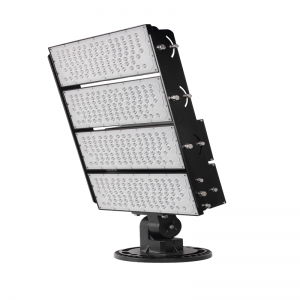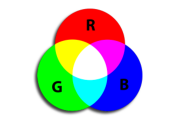Basic Terms for LEDs VF, IV, WL, IR
V stands for voltage.
F stands for positive.
I stands for current.
R stands for reverse.
WL stands for wavelength.
Therefore: VF represents the forward voltage. Generally, the vf of low-power led red, yellow, orange, and yellow-green is 1.8-2.4v, and the vf of pure green, blue, and white is 3.0-3.6v.
IF is the forward current. Generally, the IF of low-power LEDs is 20mA.
IR is the reverse current, which is generally measured under the reverse voltage of 5v. It is divided into several grades of less than 10uA (microampere), less than 5uA and 0uA.
WL is the wavelength of light. Visible light has its own wavelength, and different wavelengths correspond to different colors. For example, red light is generally 615-650nm (nanometer), and blue light is generally 450-475nm. White light has no wavelength because it is modulated by blue chip + phosphor powder. Measured by color temperature (yellowish below 3000k. Pure white at 3000k-7000k. Blueish above 7000k).
LED Vf
What does the Vf value of an LED mean? How does its size affect the LED?
Vf means forward voltage, but not necessarily the greater the forward voltage, the greater the forward current. As long as it is a low-power LED, there will be a vf value and an If value on the certificate. No matter what the vf value is (generally 1.8v-2.4v for red, yellow, yellow-green, and orange, and 3.0v-3.6v for white, blue, and emerald green), If is 20mA.
The two are complementary. For example, 2 white lights, one is 3.0v, 20mA, and the other is 3.4v, 20mA. It means that for the first light, if you give it a voltage of 3.0v, the current flowing through it is the normal rated current of 20mA, but for the second light, you need to give it a voltage of 3.4v, and the current flowing through it is 20mA. . Here Vf and If are not proportional.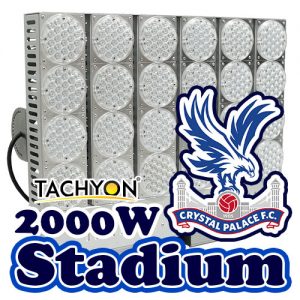
But the ratio of a yellow light to a white light, for example, the voltage of the yellow light is 2.0v, the voltage of the white light is 3.3v, the yellow light is under the voltage of 2.0v and the white light is under the voltage of 3.3v The current through them is the same, both 20mA. Here Vf and If are not proportional.
Therefore, Vf and If are absolutely proportional only if they refer to the same lamp. When you use it, no matter how big the Vf is, as long as you control the current flowing through all the lights to 20mA, it will be ok.
LED Basic Terminology
Luminous flux (lm):
The sum of the amount of visible light emitted by the light source per second. For example, a 100-watt (w) bulb can produce 1500lm, and a 40-watt (w) fluorescent lamp can produce 3500lm of luminous flux.
Luminous intensity (cd):
The luminous flux emitted by the light source within a unit solid angle, that is, the density of the luminous flux emitted by the light source in the spatially selected direction. The unit of light intensity is candela (cd), also known as candlelight. Such as: 1 unit of solid angle emits 1 lumen of light is called 1 canterla (1cd).
Brightness:
Light-emitting diode is a light-emitting device, brightness refers to the illuminance per unit area, the unit is: candle light / square meter. The standard driving current of LEDs is 20mA.
Color temperature (k):
It is expressed in absolute temperature (k=℃+273.15)K. About to heat a black body, when the temperature rises to a certain level, the color gradually changes from dark red-light 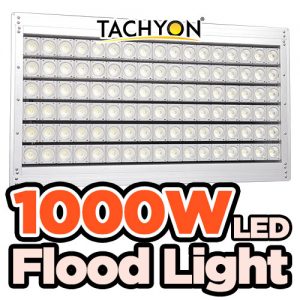
red-orange-red-yellow-yellow-white-white-blue-white-blue. When a light source has the same color as the black body, we call the absolute temperature of the black body at that time as the color temperature of the light source. For example: when the black body is heated to show a deep red, the temperature is about 550 ℃, that is, the color temperature is 823K.
Light effect (lm/w):
The luminous flux emitted by the light source divided by the power consumed by the light source. It is an important indicator to measure the energy saving of light source.
Color rendering (ra):
The degree to which the light source presents the color of the object itself is called color rendering. That is, the fidelity of the color. The International Commission on Illumination (CIE) sets the color rendering index of the sun at 100. The color rendering index of various light sources is different. Such as: incandescent lamp ra≥90, fluorescent lamp ra=60∽90.
Viewing angle:
The angle is divided into X axis (left and right) and Y axis (up and down). When the brightness of the central axis is 1, and the brightness of the left and right or up and down axes reaches 1/2, the angle is the viewing angle. Example 70° viewing angle means 35° up and down or 35° left and right from the center point.
wavelength:
The wavelength of the light emitted by the diode light-emitting tube is generally 620-660nm for red, 520-530nm for pure green, 470-480nm for blue, 580-890nm for yellow, and 550-570nm for yellow-green. Please refer to the chromaticity diagram. Different wavelengths emit light in different colors. The mixing of the two colors is also different.
Quaternary system:
Refers to a light-emitting diode made of four chemical elements of ALInGaP, which can emit light between yellow-green/yellow/orange/red (wavelength 550-630nm). It has the characteristics of high brightness and low attenuation. It is the mainstream product of outdoor LEDs at present.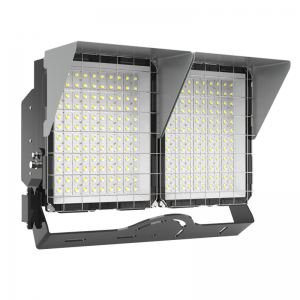
Pure Green/Yellow Green:
Traditional green LEDs are mainly yellow-green with wavelengths ranging from 550-570nm. The price is low, the brightness is also low, and the attenuation is fast. In 1994, pure green (wavelength 520-530nm) LED chips came out. High price, high brightness, slow decay, widely used in outdoor display. The two products are very different and must be clearly distinguished when designing.
Single color/Dual primary color/Full color screen:
The three primary colors are red/green/blue. If a pixel tube contains these three kinds of light-emitting diodes, it is called a full-color display. If there is only red + green, it is called dual-primary color screen. If there is only one color such as red or yellow, it is called a monochrome display. The monochrome display is mainly used to play pure text content, the dual-color display is mainly text + pattern + animation, and the full-color display is mainly used to broadcast video signals.
Lifespan:
Refers to the time when the brightness of the light-emitting diode reaches half of the initial value, also known as the half-life. Different chips will have different service life in different environments.
Brightness decay curve:
Curves of brightness and time for various chips under certain conditions (temperature, current). This curve can really understand the characteristics of the chip.
Chip/single lamp/pixel tube:
The diode light-emitting tube is a semiconductor material, and its light-emitting element is called a chip. The smallest unit that can be lit with a chip is called a single lamp. Many small lamps are assembled and encapsulated into a large tube with a cover to become a pixel tube.
Point diameter:
Refers to the diameter of the pixel tube.
Dot Spacing:
Refers to the distance between the centers of two adjacent pixel tubes. Standard distinguishable spot spacing = spot diameter × 1.25.
It means that the content displayed on the display body can be clearly seen at this distance. This distance is related to the height of the displayed text. Simple quick calculation formula:
The nearest visible distance: 50 × character height (m)
Maximum viewing distance: 200 x character height (m)
Brightness automatic adjustment:
The light-emitting diode adjusts its own brightness according to the brightness of the environment. Generally, the method of reducing the current is used to reduce the brightness.
Dot Density:
Refers to how many pixel tubes per square meter.
Operating temperature:
The minimum temperature and maximum temperature that the display can be used normally.
Explanation of Several Optical Terms of LED and Conversion Relationship
1. What is the meaning of luminous intensity (luminosity)?
Luminous intensity (I) is defined as: the luminous intensity of a point light source in a certain direction, that is, the amount of light emitted by the illuminant in a unit time, also referred to as luminosity. The common unit is candela (cd, candela). An international candle is defined as the luminosity emitted by a candle made of whale fat burning 120 grains per hour. One grid of cold is equal to 0.0648 grams.
2. What is the unit of luminous intensity (luminosity)?
The common unit of luminous intensity is candela (cd, candela). The international standard candle (lcd) is defined as the luminosity of 1/600,000 in the direction perpendicular to the black body (its surface area is 1m2) when the ideal black body is at the freezing point temperature of platinum (1769 ℃). The so-called ideal black body means that the emissivity of the object is equal to 1, and the energy absorbed by the object can be completely radiated, so that the temperature remains uniform and fixed. The exchange relationship between the international standard candle (candela) and the old standard candle (candle) is 1candela=0.981candle.
3. What is luminous flux? What is the unit of luminous flux?
The definition of luminous flux (φ) is: the energy emitted by a point light source or a non-point light source per unit time. Among them, the radiant flux that can be produced by the visual person (the radiant flux that people can feel) is called the luminous flux. The unit of luminous flux is lumens (abbreviated lm). 1 lumen (lumen or lm) is defined as the luminous flux passed by a light source of an international standard candle in a unit solid arc angle. Since the entire spherical area is 4πR2, the lumen luminous flux is equal to 1/4π of the luminous flux emitted by a candle. In other words, the spherical surface has 4π, so according to the definition of lumens, it can be known that a cd point light source will radiate 4π lumens, that is, φ (lumen) = 4πI (candle light). Assuming that △Ω is a small solid arc angle, the luminous flux △φ in the solid angle of △Ω, there is △φ=△ΩI.
4. What is the meaning of a foot candle?
A foot-candle is the illuminance on a face normal to the light that is one foot away from a one-candle of light sources (point or non-point sources). Abbreviated as 1ftc (1lm/ft2, lumen/foot2), that is, the illuminance when the luminous flux received per square foot is 1 lumen, and 1ftc=10.76lux
5. What is the meaning of one meter candle?
One-meter-candle refers to the illuminance on a surface that is one meter away from a one-candle light source (point light source or non-point light source) and is orthogonal to the light. Called lux (lux, also written as lx), that is, the illuminance (lumens/m2) when the luminous flux received per square meter is 1 lumen.
6. What is the meaning of 1lux?
The illuminance when the luminous flux received per square meter is 1 lumen.
7. What is the meaning of illuminance?
Illuminance (E) is defined as: the luminous flux received by the irradiated object per unit irradiated area, or the luminosity received by the irradiated object per unit area per unit time. Units are expressed in meter-candles or foot-candles (ftc).
8. What is the relationship between illuminance, luminosity and distance?
The relationship between illuminance, luminosity, and distance is: E (illuminance)=I (luminance)/r2 (distance squared).
9. What factors are related to the illuminance of the subject?
The illuminance of the illuminated object is related to the luminous intensity of the light source and the distance between the illuminated object and the light source, but has nothing to do with the color, surface properties and surface area of the illuminated object.


